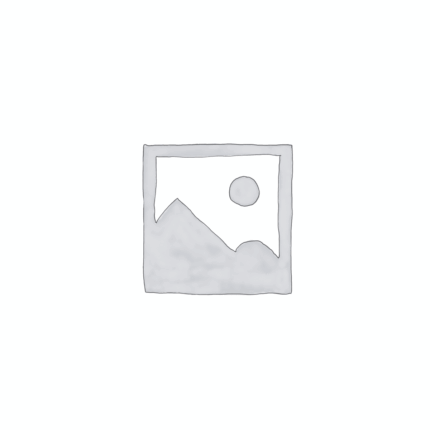Aluminum Ammonium Sulphate
Aluminum ammonium sulphate, commonly known as ammonium alum or ammonium aluminum sulfate, is a crystalline chemical compound consisting of aluminum, ammonium, and sulfate ions. It typically appears as a colorless or white crystalline solid with astringent properties. It is widely used for its excellent coagulating, clarifying, and antiseptic properties. Aluminum ammonium sulphate finds applications in water purification, cosmetics, food processing, textile dyeing, and pharmaceuticals. Its ability to precipitate impurities and act as a mordant makes it invaluable in industries requiring precise control of chemical reactions, such as in the preparation of baking powder and fireproof textiles.
Aluminum Ammonium Sulphate Uses
Primary Uses
Water Treatment
- Used as a coagulating agent in potable water and wastewater treatment plants to remove suspended solids, turbidity, and microorganisms.
- Facilitates sedimentation and filtration by forming flocs, improving water clarity and safety.
Food & Beverages
- Acts as a firming agent and stabilizer in pickling and baking (E523 food additive).
- Used in baking powder formulations to regulate leavening and improve texture in baked goods.
- Added in processed cheese and some canned vegetables as a preservative and texture enhancer.
Cosmetics & Personal Care
- Incorporated into deodorants and astringents for its antibacterial and skin-tightening effects.
- Used in aftershaves and facial toners for soothing and antiseptic properties.
Textile & Dye Industry
- Functions as a mordant to fix dyes on fabrics, improving colorfastness and intensity.
- Used in tanning leather and textile finishing to improve durability and resistance.
Pharmaceuticals
- Utilized as an astringent and antiseptic in topical applications and medical formulations.
- Employed in hemostatic agents to control minor bleeding.
Secondary Uses
Paper Industry
- Used in paper sizing to improve strength, gloss, and ink receptivity.
Fireproofing Agents
- Component in fire-retardant treatments for textiles and wood products due to its flame-inhibiting properties.
Water Purification Tablets
- Used in solid tablets for portable water purification systems.
Leather Industry
- Employed in tanning and conditioning to enhance leather quality.
Animal Feed
- Occasionally used as a mineral supplement, though less common.
1. Basic Identification Attributes
- Chemical Name (IUPAC): Ammonium aluminum sulfate dodecahydrate
- Common/Trade Names: Ammonium alum, Aluminum ammonium sulfate, Ammonium aluminum sulfate
- CAS Number: 7784-24-9
- HS Code: 2833.29.00
- Molecular Formula: NH₄Al(SO₄)₂·12H₂O
- Synonyms: Ammonium alum, ammonium aluminum sulfate dodecahydrate, E523 (food additive)
2. Physical & Chemical Properties
- Physical State: Crystalline solid, often in powder or granular form
- Color & Odor: White, odorless crystals
- Melting Point: ~92.5°C (decomposes upon heating)
- Boiling Point: N/A (decomposes)
- Density: ~1.73 g/cm³
- Solubility: Highly soluble in water (~70 g/100 mL at 20°C)
- pH (in solution): Acidic (~3.5 - 4)
- Vapor Pressure: Negligible
- Stability: Stable under normal conditions, decomposes on heating releasing ammonia and sulfur oxides
3. Safety & Hazard Attributes
- Hazard Class (GHS): Generally regarded as safe, but may cause eye and skin irritation
- NFPA Ratings: Health 1 (slight irritation), Flammability 0, Reactivity 0
- Exposure Limits: No specific OSHA PEL, low toxicity but avoid prolonged inhalation or ingestion
- Reactivity: Stable under normal conditions; decomposes on heating
- Incompatibilities: Strong bases, strong reducing agents, and strong oxidizers
4. Storage & Handling Attributes
- Storage Conditions: Store in a cool, dry, well-ventilated area, away from moisture and incompatible materials
- Container Type: Plastic or glass containers with tight sealing to prevent moisture uptake
- Shelf Life: Typically several years if kept dry and sealed
- Special Handling: Avoid dust formation; use PPE including gloves, goggles, and dust masks when handling powders
5. Regulatory & Compliance Attributes
- FDA: Approved as a food additive (E523) for use as a firming agent and acidity regulator
- EFSA: Approved for use within specified limits in food products
- Transportation: Not classified as hazardous
- Disposal: Dispose of in accordance with local regulations; not classified as hazardous waste
6. Environmental & Health Impact
- Ecotoxicity: Low toxicity to aquatic organisms but avoid large releases to water bodies
- Persistence: Decomposes in the environment; no significant bioaccumulation
- Carcinogenicity: Not classified as carcinogenic or mutagenic by IARC or OSHA
- Biodegradability: Inorganic compound; does not biodegrade but dilutes and decomposes in nature
Safety Handling Precautions
- PPE: Use gloves, safety goggles, and dust masks to prevent skin, eye, and respiratory exposure.
- Ventilation: Handle in well-ventilated areas to avoid inhalation of dust.
- Hygiene: Wash hands thoroughly after handling; avoid eating, drinking, or smoking while handling the chemical.
- Spill Handling: Sweep up dry spills carefully; avoid creating dust clouds; dispose of according to local regulations.
First Aid Measures
- Inhalation: Move affected person to fresh air; if breathing difficulty occurs, seek medical attention immediately.
- Skin Contact: Wash skin with soap and water; remove contaminated clothing; seek medical advice if irritation persists.
- Eye Contact: Rinse eyes thoroughly with water for at least 15 minutes; seek medical attention if irritation persists.
- Ingestion: Rinse mouth and drink plenty of water; do not induce vomiting unless directed by medical personnel; seek medical attention if large amounts ingested.
Firefighting Measures
- Fire Hazards: Non-flammable; decomposes on heating releasing toxic fumes including ammonia and sulfur oxides.
- Extinguishing Media: Use water spray, foam, dry chemical powder, or carbon dioxide to extinguish fires in surrounding materials.
- Special Precautions: Firefighters should wear self-contained breathing apparatus (SCBA) due to hazardous decomposition products.
- Cooling: Cool containers exposed to heat with water spray to prevent rupture.


 Pesticides (Herbicides, Insecticides, Fungicides)
Pesticides (Herbicides, Insecticides, Fungicides) Animal Feed Additives
Animal Feed Additives Biostimulants
Biostimulants Plant Growth Regulators
Plant Growth Regulators Fertilizers
Fertilizers Soil Conditioners
Soil Conditioners
 Decoratives
Decoratives Dough Conditioners
Dough Conditioners Fat Replacers
Fat Replacers Flour Treatments
Flour Treatments Leavening Agents
Leavening Agents Preservatives(baking)
Preservatives(baking)
 Bleaching Agents
Bleaching Agents Builders
Builders Enzymes
Enzymes Fragrances
Fragrances Surfactants(cleaning)
Surfactants(cleaning) Solvents (cleaning)
Solvents (cleaning)
 Admixtures
Admixtures Anti-Corrosion Coatings
Anti-Corrosion Coatings Concrete Repair Chemicals
Concrete Repair Chemicals Curing Compounds
Curing Compounds Sealants and Adhesives
Sealants and Adhesives Waterproofing Agents
Waterproofing Agents
 Antioxidants(cosmetic)
Antioxidants(cosmetic) Emollients
Emollients Fragrances and Essential Oils
Fragrances and Essential Oils Humectants
Humectants Surfactants(cosmetic)
Surfactants(cosmetic) Thickeners
Thickeners UV Filters
UV Filters Preservatives (cosmetic)
Preservatives (cosmetic)
 Bio-based Solvents
Bio-based Solvents Biodegradable Surfactants
Biodegradable Surfactants Carbon Capture Chemicals
Carbon Capture Chemicals Renewable Polymers
Renewable Polymers Wastewater Treatment Chemicals
Wastewater Treatment Chemicals
 Acidulants
Acidulants Antioxidants
Antioxidants Colorants(food)
Colorants(food) Emulsifiers
Emulsifiers Flavor Enhancers
Flavor Enhancers Nutraceutical Ingredients (food)
Nutraceutical Ingredients (food) Nutrient Supplements
Nutrient Supplements Preservatives(food)
Preservatives(food) Sweeteners
Sweeteners
 Dried Herbs
Dried Herbs Fresh Herbs
Fresh Herbs Ground Spices
Ground Spices Spice Blends
Spice Blends Whole Spices
Whole Spices
 Analytical Reagents
Analytical Reagents Biochemical Reagents
Biochemical Reagents Chromatography Chemicals
Chromatography Chemicals Inorganic and Organic Standards
Inorganic and Organic Standards Laboratory Safety Chemicals
Laboratory Safety Chemicals Microbiology and Cell Culture Reagents
Microbiology and Cell Culture Reagents Molecular Biology Reagents
Molecular Biology Reagents Solvents(lab)
Solvents(lab) Specialty Laboratory Chemicals
Specialty Laboratory Chemicals Spectroscopy Reagents
Spectroscopy Reagents
 Collectors
Collectors Dust Suppressants
Dust Suppressants Explosives and Blasting Agents
Explosives and Blasting Agents Flocculants and Coagulants
Flocculants and Coagulants Frothers
Frothers Leaching Agents
Leaching Agents PH Modifiers
PH Modifiers Precious Metal Extraction Agents
Precious Metal Extraction Agents
 Catalysts
Catalysts Corrosion Inhibitors
Corrosion Inhibitors Demulsifiers
Demulsifiers Drilling Fluids
Drilling Fluids Hydraulic Fracturing Fluids
Hydraulic Fracturing Fluids Scale Inhibitors(oil)
Scale Inhibitors(oil) Surfactants(oil)
Surfactants(oil)
 Active Pharmaceutical Ingredients (APIs)
Active Pharmaceutical Ingredients (APIs) Analgesics and Antipyretics
Analgesics and Antipyretics Antibiotics
Antibiotics Antiseptics and Disinfectants
Antiseptics and Disinfectants Excipients
Excipients Nutraceutical Ingredients (Pharmaceutical)
Nutraceutical Ingredients (Pharmaceutical) Solvents(pharmaceutical)
Solvents(pharmaceutical) Vaccine Adjuvants
Vaccine Adjuvants
 Antioxidants(plastic)
Antioxidants(plastic) Colorants (Pigments, Dyes)
Colorants (Pigments, Dyes) Fillers and Reinforcements
Fillers and Reinforcements Flame Retardants
Flame Retardants Monomers
Monomers Plasticizers
Plasticizers Polymerization Initiators
Polymerization Initiators Stabilizers (UV, Heat)
Stabilizers (UV, Heat)
 Accelerators and Retarders
Accelerators and Retarders Adhesion Promoters
Adhesion Promoters Antidegradants (Antioxidants, Antiozonants)
Antidegradants (Antioxidants, Antiozonants) Blowing Agents (for foam rubber)
Blowing Agents (for foam rubber) Plasticizers and Softeners
Plasticizers and Softeners Reinforcing Agents (Carbon Black, Silica)
Reinforcing Agents (Carbon Black, Silica) Vulcanizing Agents (e.g., Sulfur, Peroxides)
Vulcanizing Agents (e.g., Sulfur, Peroxides)
 Analytical Reagents
Analytical Reagents Automotive chemicals
Automotive chemicals Electronic Chemicals
Electronic Chemicals Lubricants
Lubricants Photographic Chemicals
Photographic Chemicals Pyrotechnic Chemicals
Pyrotechnic Chemicals Refrigerants
Refrigerants Sealants and Adhesives
Sealants and Adhesives
 Antistatic Agents
Antistatic Agents Bleaching Agents
Bleaching Agents Dyes and Pigments
Dyes and Pigments Finishing Agents
Finishing Agents Flame Retardants
Flame Retardants Softening Agents
Softening Agents
 Antifoaming Agents
Antifoaming Agents Chelating Agents
Chelating Agents Coagulants and Flocculants
Coagulants and Flocculants Corrosion Inhibitors
Corrosion Inhibitors Disinfectants and Biocides
Disinfectants and Biocides Oxidizing Agents
Oxidizing Agents pH Adjusters (water)
pH Adjusters (water) Scale Inhibitors( water)
Scale Inhibitors( water)
















